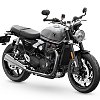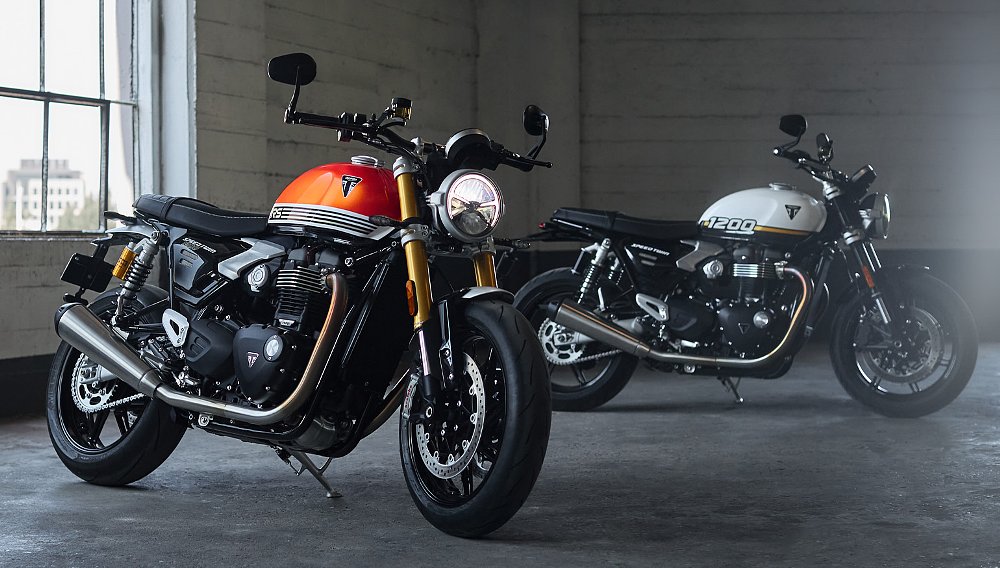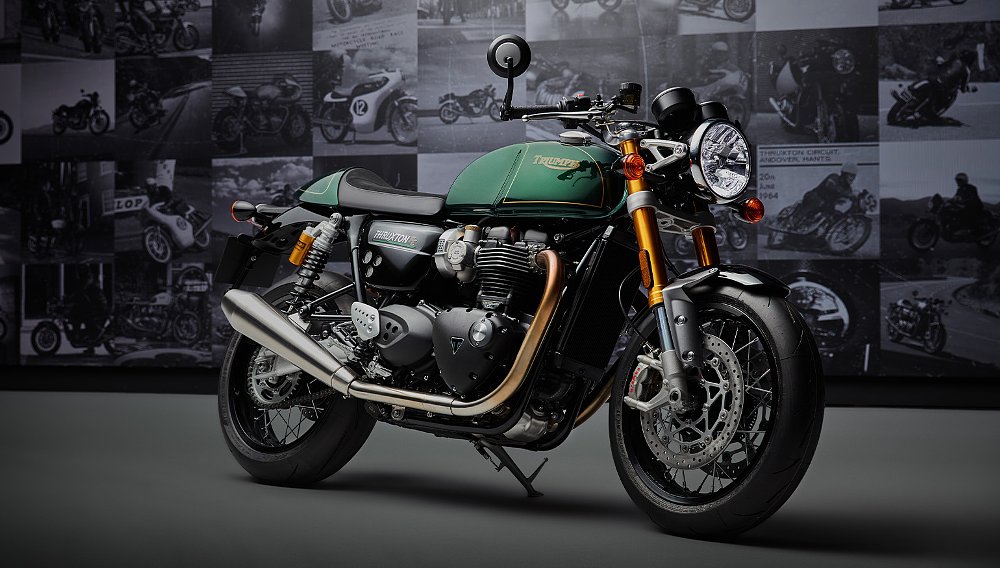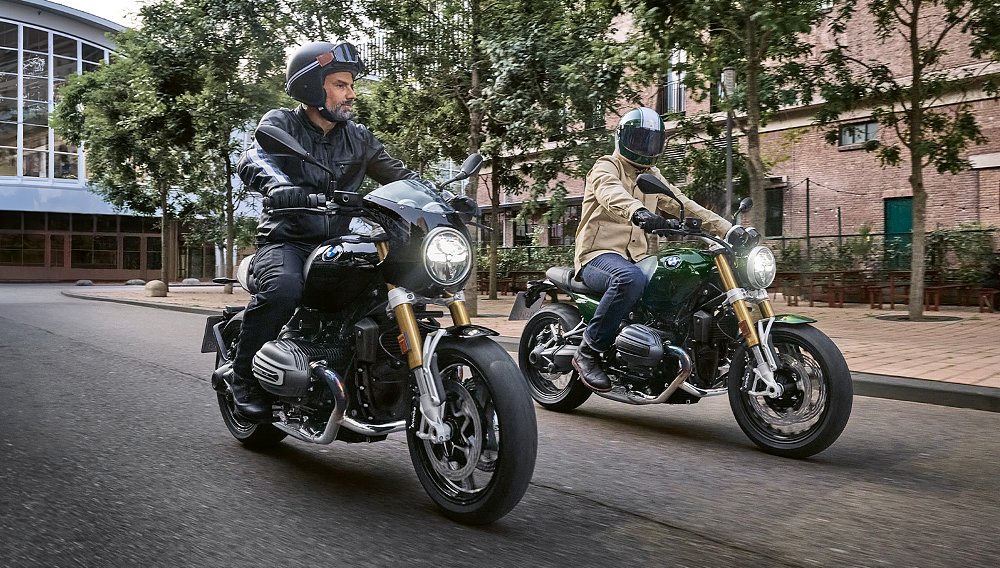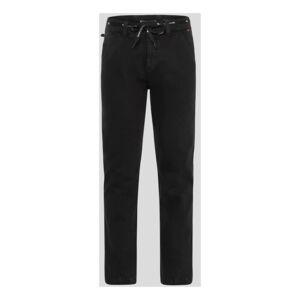Some riders want a retro motorcycle and style matters above all else. It has to look exactly right, feel authentic.
Then there are other riders who like retro style but don't want to give up performance totally to get it. Maybe they've been riding a performance naked bike but are tired of a motorcycle that's shaped like a robot or has a headlight that resembles insect mandibles. They just want a proper motorbike, dammit. Triumph takes aim at those riders with its Speed Twin 1200 and Speed Twin 1200 RS.
Riders who are focused on traditional style are steered toward the Bonneville, which pays clear homage to the motorcycles that carried that name 50 years ago. With the Speed Twin, the designers take a few more liberties — but try never to take too many. A couple of examples illustrate the idea. The new triangular engine case on the 2025 Speed Twin models adds a few angles, while the Bonneville has to have a rounded engine case. The Speed Twin gets rather modern looking aluminum wheels, not spoked wheels.
The result is a motorcycle with a few more edges but definitely still retro. Though the engine is liquid-cooled, the fins on the cylinders are machined to make them noticeable. The headlight is round (retro) but with an LED (modern).
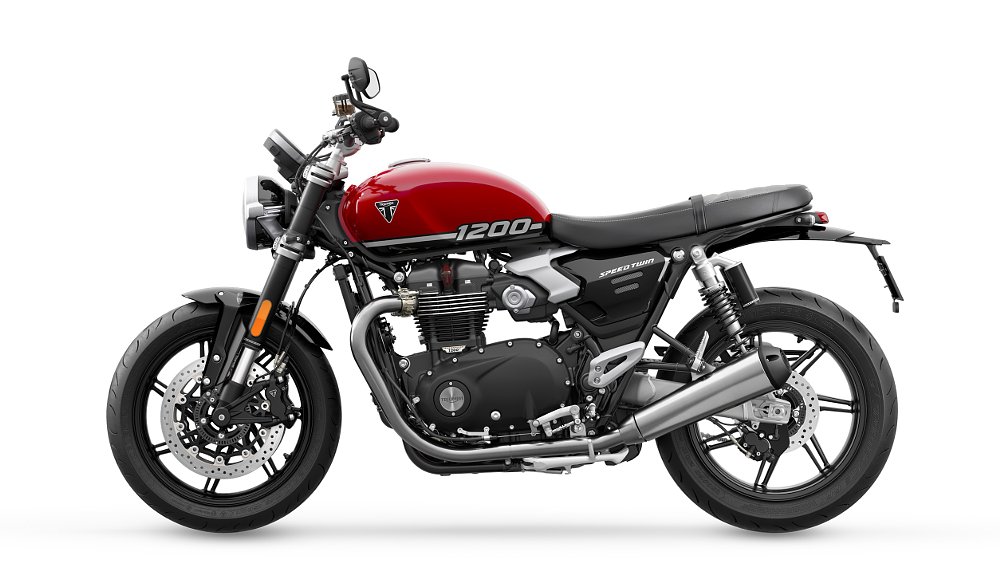
For the 2025 Speed Twin twins, Triumph made a few other changes to slim down the bikes. The fuel tank is even slimmer between the rider's knees, the seat is narrower, and the exhaust is shorter.
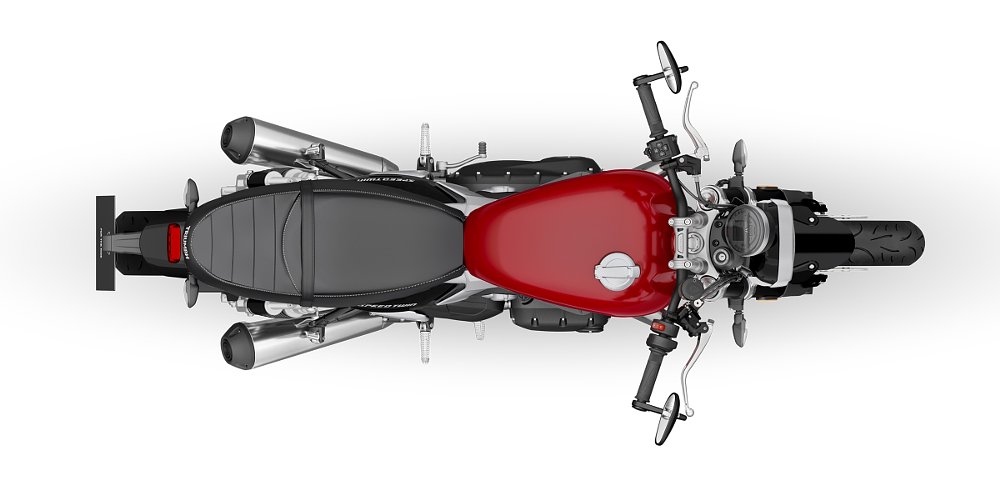
Those appearance changes apply to both Speed Twin 1200 models for 2025, the base bike and the RS. Underneath the skin, as Dustin described in his first look article, the Speed Twin twins share the same powerplant and the main differences between them are suspension, brakes, and electronics. Both have a Marzocchi fork with the same travel, but the unit on the RS is adjustable. The dual rear shocks on the 1200 are by Marzocchi, too, while the RS gets fully adjustable Öhlins units. The RS gets Brembo Stylema calipers while the base bike gets Triumph-branded pieces. The RS adds a third riding mode, Sport, to the Road and Rain modes on the 1200 and the RS gets the Triumph Shift Assist quickshifter. Both models wear Metzeler tires, but the RS's rubber is the sportier Racetec RR.
Triumph engineers added a little more top end to the engine but the Speed Twins are still about usable power and attention to detail with the styling and finishes, not maximum performance.
"Speed Twin riders don't need 200 horsepower or 13,000 rpm rev limits," said Alastair Fairgrieve, Triumph's global product marketing manager. "What they really want is a feeling. It's about riding a bike that's got personality, soul."
A hundredish horsepower, weight under 500 pounds, strong brakes, and suspension not sourced from the bargain bin is a recipe for a sweet ride. Triumph gave us the opportunity to ride the Speed Twins on some very tight and twisty gorgeous mountain roads on the Spanish island of Mallorca, where sand-colored rocky mountains soar up out of the Mediterranean and the main road hazard is the incredible views trying to take your eyes away from the next rapidly approaching second-gear corner. Well, that and wild goats. They can be a bit of a hazard, too. But about the bikes.
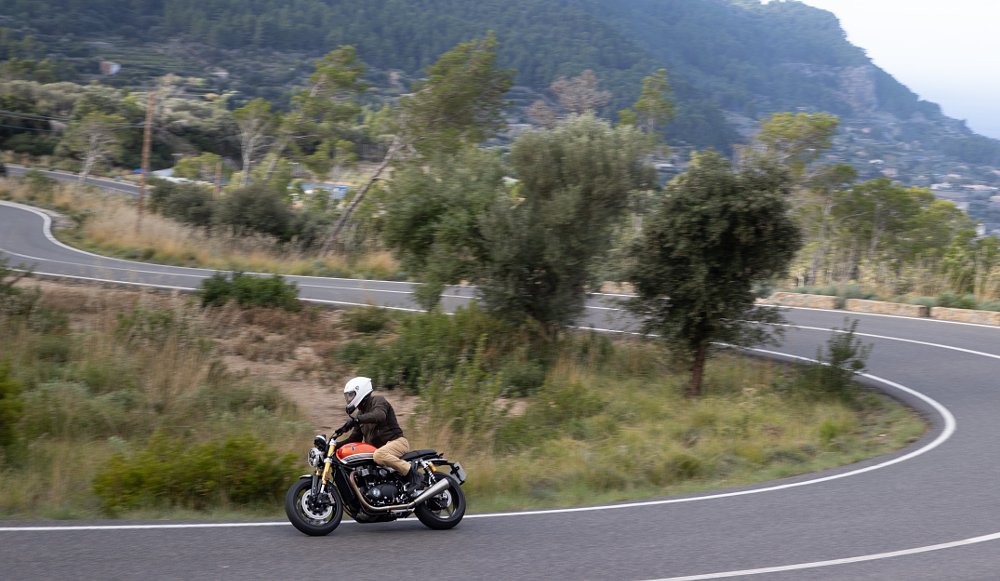
Riding the Triumph Speed Twin 1200 RS
Triumph laid out an out-and-back route through the Serra de Tramuntana mountains on the northwestern coast of the island, so I rode the RS in the morning and rode the regular Speed Twin on essentially the same route after a lunch stop, adding up to a little over 100 miles in all. The route consisted mostly of tight mountain roads interrupted by a few small villages with streets barely wide enough for two cars to squeeze through. I spent most of the day in second and third gear and actually used fifth and sixth only once in the morning and once in the afternoon, on the same section of connecting highway.
As a result, there are some aspects, such as long-haul comfort, I can only speculate about. But as one of my colleagues stated, "This would be the perfect bike to have if you lived here." On a 1,400-square-mile island, you don't have to worry that much about wind protection and luggage capacity for long trips.
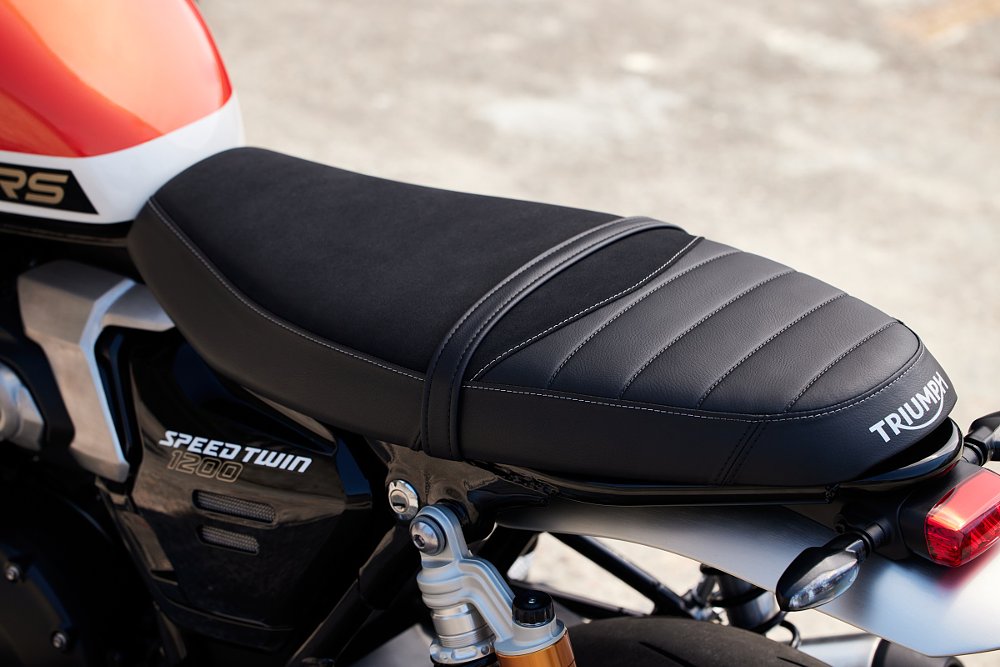
What the 1200 RS gives you, instead — what both models give you, actually — is a fat spread of torque in the midrange that's very handy for the endless series of second-gear corners we were riding. You can let the engine drift down below 3,000 rpm and it won't complain, but I liked keeping it above 4,000 rpm for best results. In addition to the midrange, the revised 1,200 cc twin gives a more satisfying finish at the top of the rev range. The new engine's power curve is the same up to 7,000 rpm, but then it adds five more horsepower than the previous model as it reaches the rev limiter at 8,000 rpm.
I started out in Road mode. The Speed Twins have a bit of abruptness going from fully closed throttle to rolling on the gas, a feature that's practically considered standard these days, given current emissions regulations, and therefore probably wouldn't even be worth mentioning except for the fact some other Triumphs are known for having among the best fueling in the business. So, expecting perfection, I found quite good, instead.
When I switched into Sport mode, I was relieved to find that the throttle response did not become so aggressive that it made riding smoothly more difficult. The Sport throttle response is definitely snappier. If that were all there was to it, I'd probably ride this bike all the time in Road mode and forget about it, unless it was raining.
But that's not quite all there is to it. Sport mode reduces the intervention of the traction control and ABS, as well, and those levels can't be adjusted further. You can turn off traction control completely, but if you want to keep it as a safety net but make it the least heavy-handed possible, you need the Sport mode found on the RS. In Road mode, some of the testers felt the traction control was too intrusive. I admit, the light flashed on the dash more than I'm accustomed to seeing, but I'm not sure how much it was actively intervening. So a sport-minded rider, especially one taking the Speed Twin 1200 RS to the track, might want Sport mode not so much for the throttle response, but for the reduced traction control sensitivity.
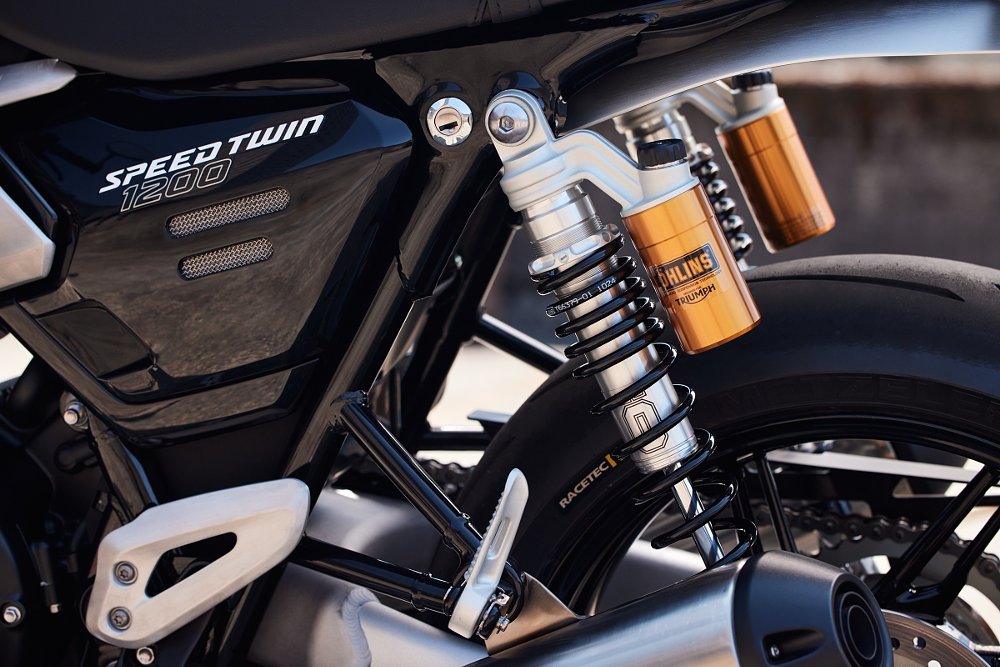
When I asked followers on Bluesky what questions they wanted answered, the most predictable one was whether the uprated suspension was worth the additional $2,400. It's a good and legitimate question, but not one easy to answer because the answer will differ for different riders. As far as how it works, we were riding on wonderfully smooth asphalt most of the day, and the RS's suspension unsurprisingly handled that in the sportingly competent manner you'd expect. When I did find some patched pavement and other bumps to hit, the dual Öhlins rear shocks soaked it up expertly, as usual. So does that mean they're worth it? More later, after we see the base model.
Of course in addition to the uprated suspension you also get the Brembo Stylema four-piston front brake calipers, which give you strong stopping power, good feel, and a crisp initial bite. The two-piston caliper on the rear brake is also more powerful than most. It's not hard to test the rear ABS.
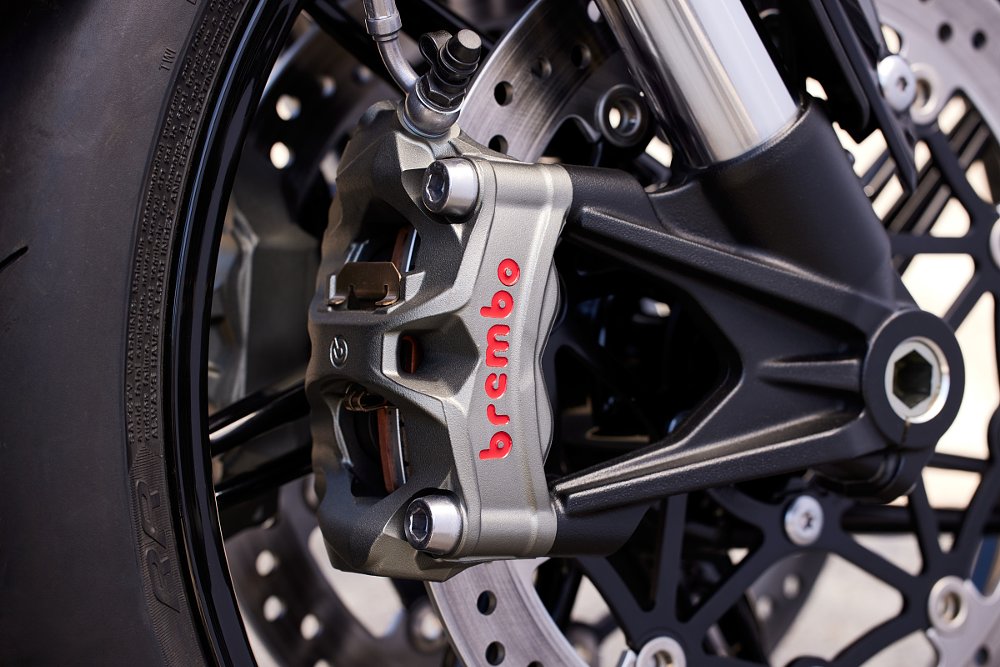
The other additional feature on the RS is less satisfying. The quickshifter may sound like a perfectly logical feature for the sportier version, but reality is more complicated. Like some other quickshifters, it works better at higher engine speeds and in higher gears. The nature of the Speed Twin's engine encourages you to short shift and surf the mid-range, however, where the quickshifter is more balky.
One final difference is that the RS is fitted with the racier Metzeler Racetec tires, and on the cool morning roads as we set out for our ride, they needed a minute to get up to temperature and work their best. Of course an RS owner can always swap to different tires, but the Racetecs, like the quickshifter, are an upgrade that almost feels too racy for what the motorcycle really is.
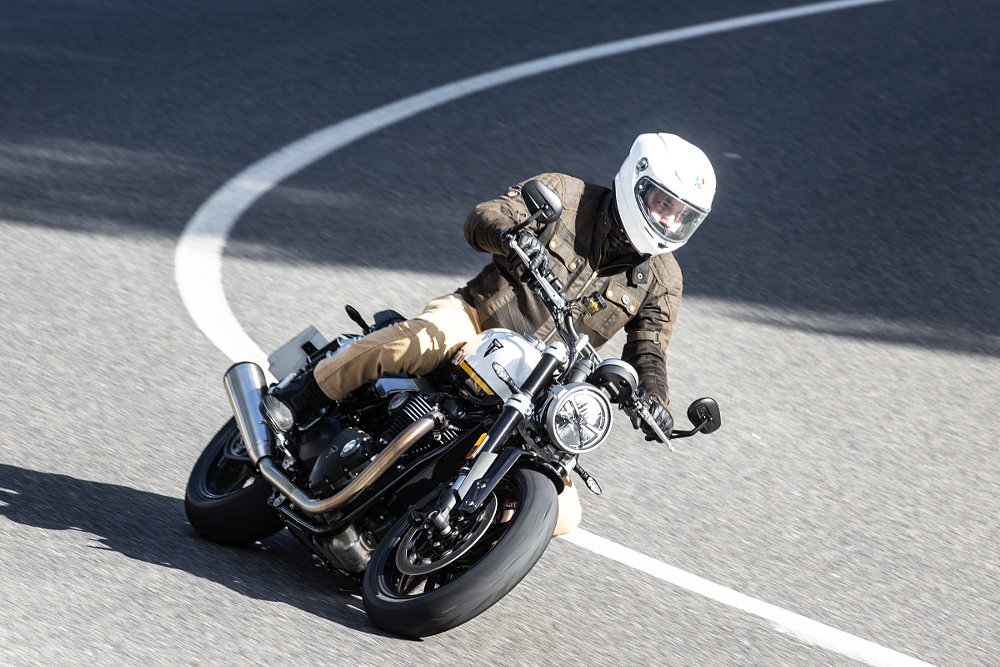
Riding the Triumph Speed Twin 1200
Switching to the regular Speed Twin 1200 after lunch, I'm back in Road mode, because it's not raining and that's what I have. So long, Sport mode. Of course you get the same power and the Road mode's throttle response actually feels better to me, so that's no penalty, as long as you're OK with the traction control light blinking now and then. Or unless you want to do your best Zack Courts imitation and pull some wheelies. Then you'll miss Sport mode. (Or just have to turn off traction control.)
The base Speed Twin also gets four-piston front brake calipers but they are branded Triumph. The company reps just smiled silently when we asked where they were sourced, but the J.Juan markers on the components were a strong hint. Are they as powerful as the ones on the RS? Not quite, but if I hadn't just ridden the RS, I wouldn't have noticed. I think they're all the brakes a typical Speed Twin rider is going to need.
It's a similar story with the suspension. If I hadn't ridden the RS first, I wouldn't have said that there was anything wrong with the front fork on the base Speed Twin, though after comparing the two, maybe the RS feels a little more planted when braking and initiating a turn. The other reason to get the suspension on the RS, of course, is its adjustability. Most of the riders on our ride never adjusted the suspension on the RS during the short time we were on it. If you're heavier or lighter than the norm, you might benefit from that adjustability, and if you're taking your Speed Twin to the track, then just like having Sport mode, having the ability to fine-tune your setup would be more of an asset.
I expected the ergonomics of the two Speed Twins to feel more different than they did. The changes were mostly small: On the RS, the handgrips are 0.64 inches lower and 0.35 inches further forward while the footpegs are 0.26 inches higher and 1.6 inches further rearward. One of the reasons for moving the footpegs back on the RS is to make room for the quickshifter mechanism. As a result, you can't fit the quickshifter to the base model with the stock footpegs and brackets. To me, the ergonomics were basically the same.
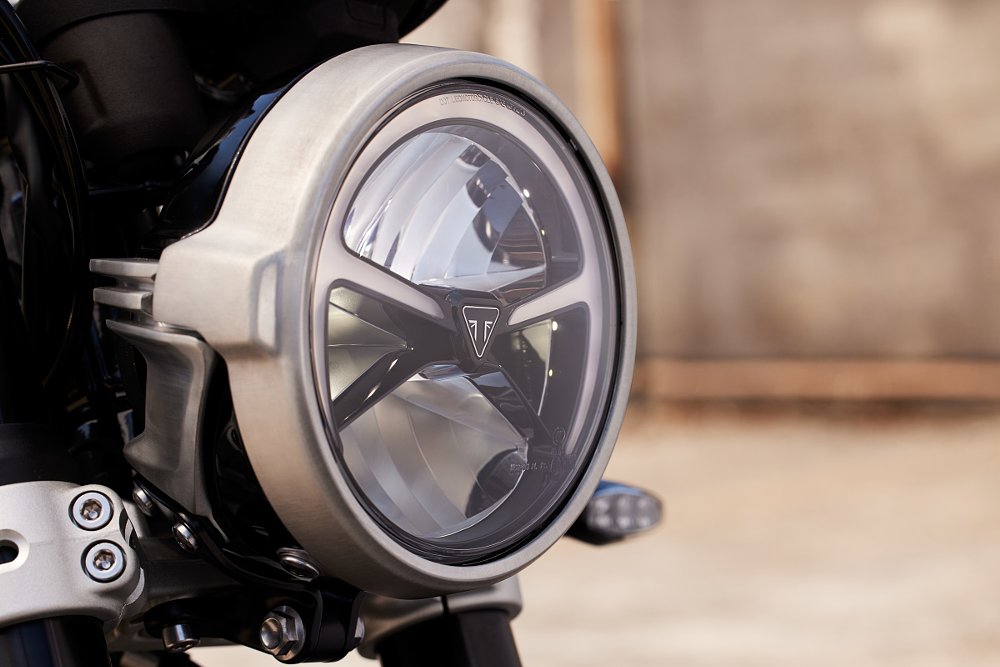
The details: Daily life with a Speed Twin
I also had a few people ask comfort-related questions, and there are a few items I think deserve mention. One person asked if the seat was as hard as it looks, and, while the bench seat may not be as hard as a wooden bench, it is firm. Even though we only rode a little more than 100 miles, we spent several hours in the saddle because of the tight roads and stops for photos and video. The seat felt good for spirited riding, but yes, it does get hard after a few hours. Also worth noting, the RS has a suede-like finish on the rider's portion of the seat that is just a slight bit grippier than the smoother seat on the base model. It's kind of incongruous. If you're riding hard and wanting to shift your weight, it's slightly easier on the less sporty model.
Another potential comfort issue is engine heat. At one point in the ride we were stuck behind a large bus that couldn't get through the hairpin turns on the narrow mountain road without using absolutely all of both lanes, so traffic in both directions came to a stop several times and we crawled along in first gear for maybe 20 minutes in between those stops. The day was comfortably cool, but I definitely felt the engine heat coming off the cylinders and warming my knees. One of the styling changes Triumph made was making the rear portion of the fuel tank slimmer, to go with the slimmer seat, and the result is that those machined fins on the cylinder actually protrude farther than the narrowest portion of the tank. If you're the kind of rider who wants to squeeze the tank with your knees, you may find you're also warming your shins on the cylinders. And if you're riding on hot days in city traffic, expect to feel some heat.
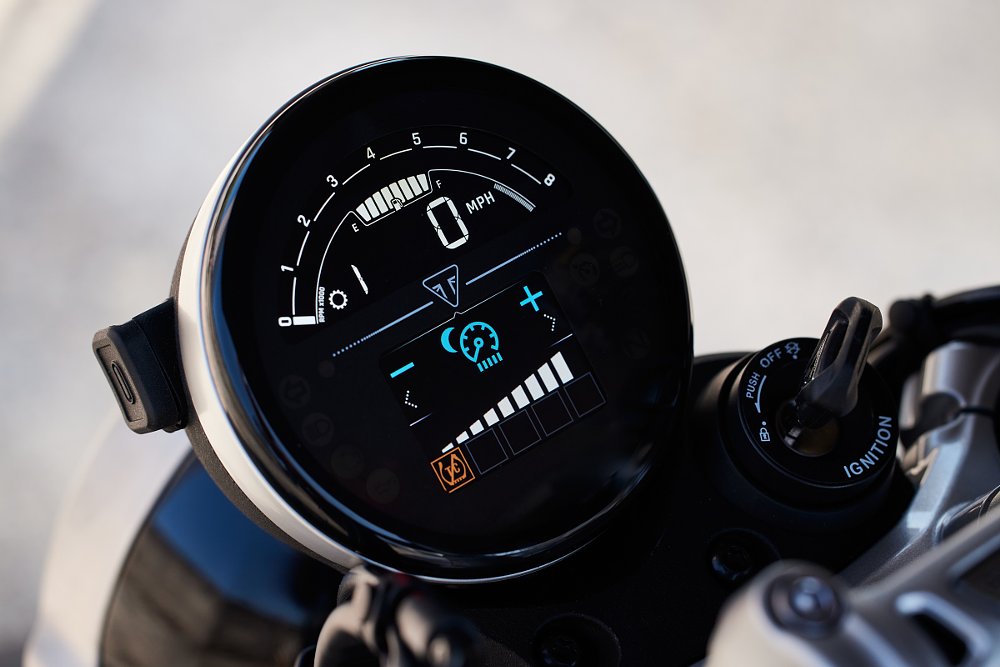
As for engine vibration, while some comes through the grips at higher engine speeds, it didn't bother me at all. It was what I'd expect from a 1,200 cc parallel twin with a 270-degree crank. And I suspect that if you're the kind of rider who loves silky smooth engines because you're sensitive to vibration, you're not shopping this category anyway.
Speaking of that twin, Triumph reps said sound, as well as appearance, is something Speed Twin customers often cite as important. One note on that: When I was sitting at a stop sign behind four or five Speed Twins with that 270-degree engine, it sounded just like I was following a pack of cruisers. Sitting on my own bike, it didn't sound the same. Something about having those twin exhausts pointed at my face changed the experience. I'm not saying that means anything, just something I noticed. If you buy a Speed Twin and think it doesn't sound the way you wanted or expected, trying letting it idle and go stand behind it for a while.
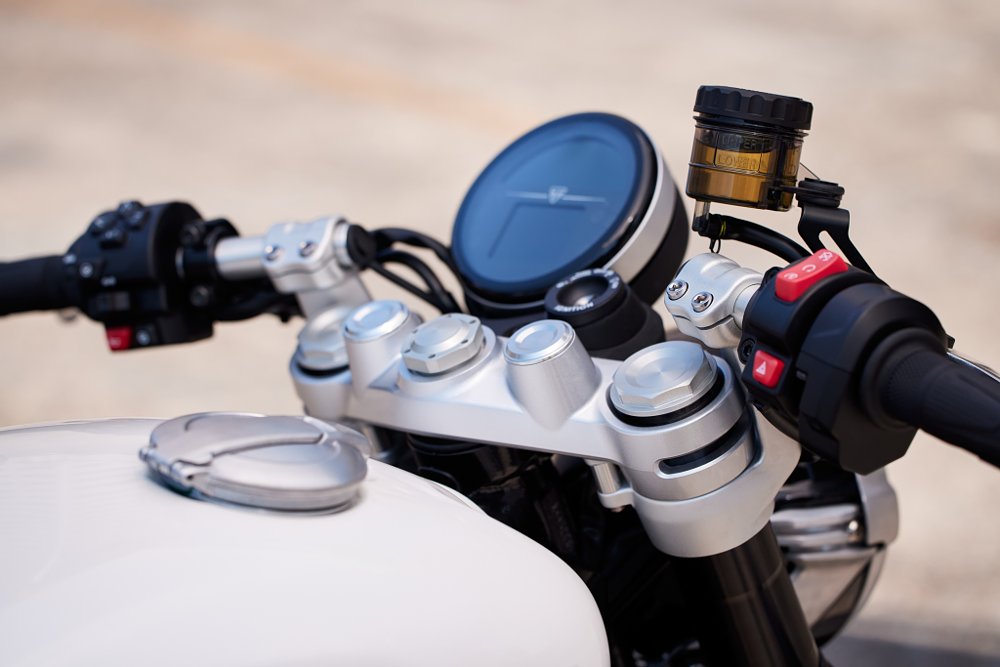
So which do I choose, base or RS?
To return to the earlier question, are the RS's upgrades worth the price difference? Which Speed Twin is right for you? After hearing the Triumph reps talk about the two models and describe different customers for each, I was surprised they didn't feel more different from each other.
To start with, the ergonomics are very similar. I probably wouldn't have noticed the fraction of an inch difference in the handlebar if I hadn't been looking for it. The biggest ergonomic difference is the footpeg position, but even that's not enough to substantially change the feel of the motorcycle.
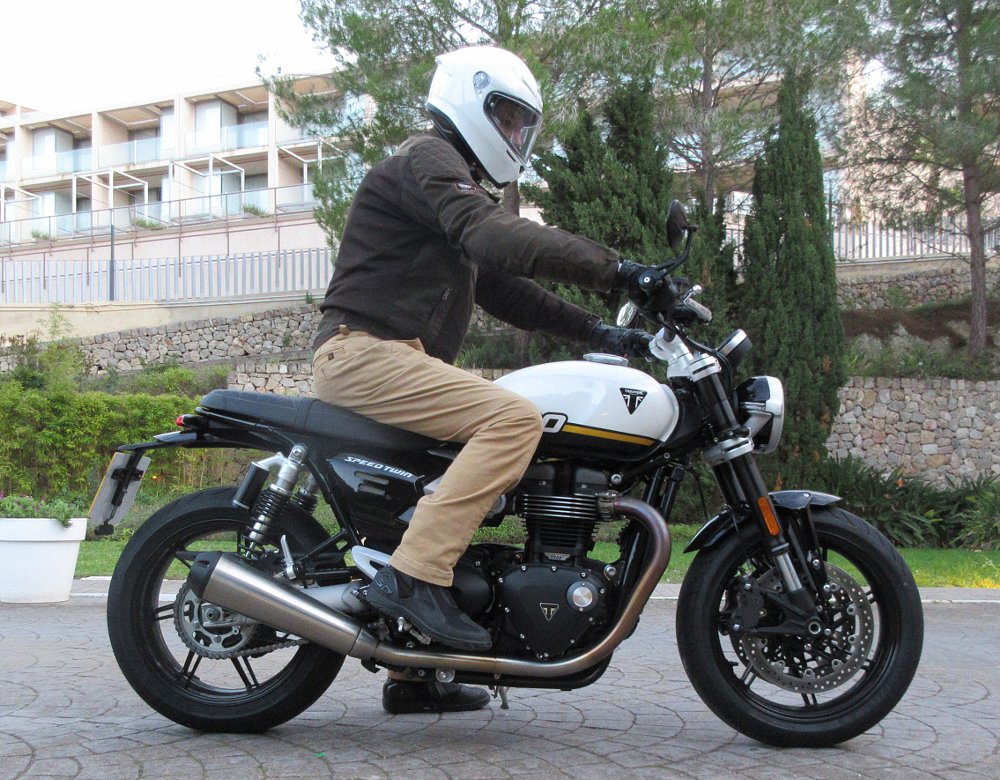
So if they're that similar, then you have to ask if the premium components are worth the price. Yes, the brakes and suspension offer some advantage for riders who really want to push their bikes hard, but are most Speed Twin riders really going to test the limits of the pieces on the base Speed Twin? I doubt it and I didn't. The quickshifter sounds good, but in reality I would probably only use it a lot if I were riding the RS at a track day. Like the tires and the suspension adjustability, that's when it would most become an advantage, but are people taking Speed Twins to the track? Wouldn't they rather take something less pretty, I mean just in case?
I think it comes down to the fact that many people aren't going to be able to justify the added cost of the RS while some other people can afford it and get satisfaction from knowing they have the best components (without having to buy aftermarket shocks or brakes themselves). I think both should end up happy. If you're a good enough rider that you can exploit the difference in performance between the base shocks and the Öhlins, you love seeing that gold bling reminder every time you walk up to the motorcycle, and you can afford it, then go for it, especially if you're going to the track and want to use all the capability this bike has. On the other hand, I hope riders who buy a base Speed Twin 1200 never have unfounded envy or regrets they didn't get an RS, because I think they'll have nearly the same capability. And more color choices.
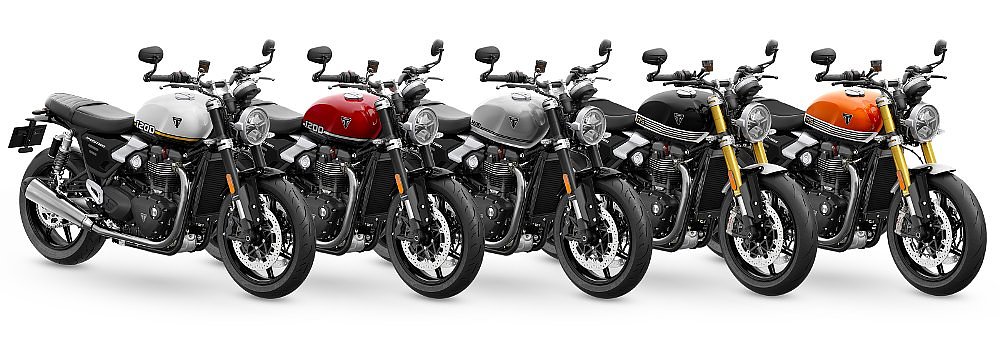
When I started thinking about which motorcycles compete with the Speed Twin, I had a hard time coming up with a long list. Zack is currently testing the new BMW R 12 nineT (so watch for that review and a Daily Rider episode), and I can see someone cross-shopping the BMW "Heritage" model and the Triumph "Modern Classic," but the BMW starts at a significantly higher price of $16,295, and that's for a hard-to-find base model. Triumph reps said customers in the past most often mentioned the BMW R nineT as a competitor, as well as the Kawasaki Z900RS and Yamaha XSR900. Those two Japanese bikes are less expensive but take different styling directions. If your mental image of "motorcycle" is more 1980s four-cylinder UJM than 1960s British twin, then you'll naturally gravitate toward the Kawasaki, while the Yamaha is an entirely different direction, not a copy of anything past but its own styling exercise.
I'd also suggest that maybe a Ducati Scrambler 1100 Sport Pro could be competition for the Triumphs. Like the Speed Twin RS, it gives you Öhlins suspension but the air-cooled engine produces less power and the price is higher at $17,195.
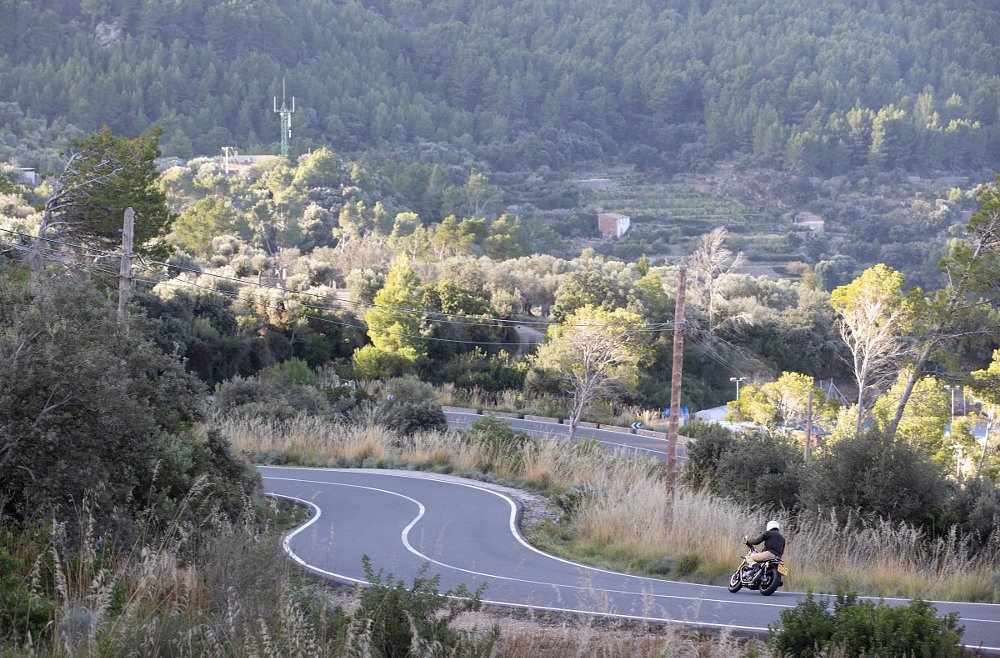
When I participated in a Highside/Lowside podcast last year about motorcycles that changed history, one of my choices was the original Speed Twin from 1938, a landmark model that popularized the overhead-valve, parallel-twin architecture that had such a huge role in the 20th century motorcycle industry. Looking at the full history of Triumph, not just the current company but also the predecessor, maybe no model name has more history behind it than the Speed Twin. Triumph has put a lot of effort into making these current Speed Twins a worthy successor, one with style that's true to the past and modern performance that feels like enough, but not overkill.
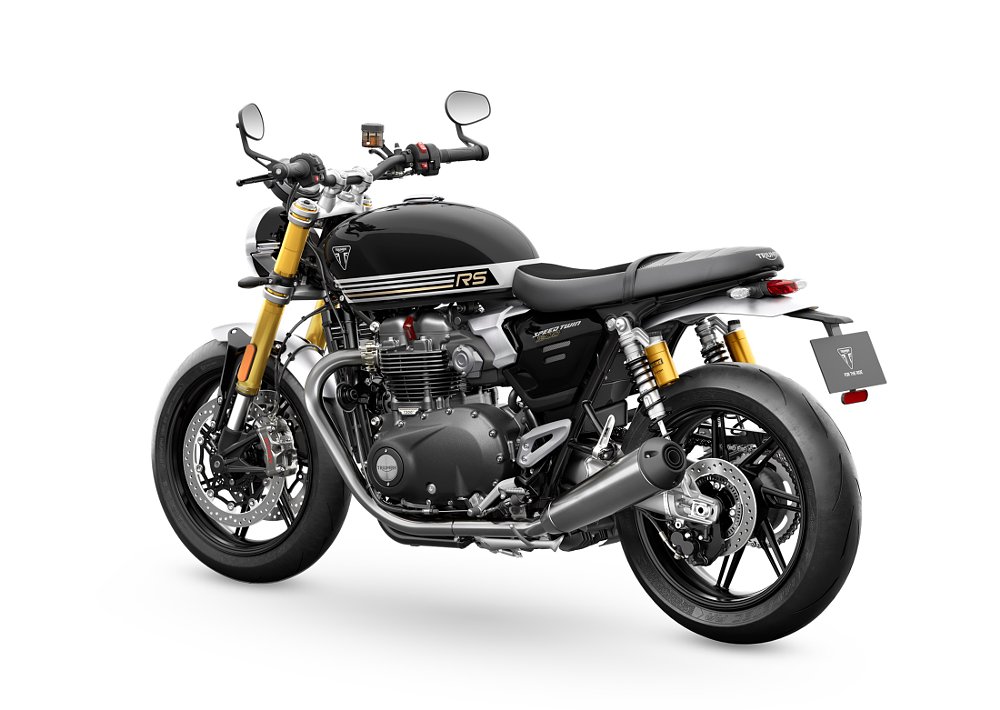
If the look of the Speed Twin 1200 pushes the right buttons for you, I don't think you'll be disappointed in how it performs.
| 2025 Speed Twin 1200 | 2025 Speed Twin 1200 RS | |
|---|---|---|
| Price (MSRP) | $13,595 U.S.; $15,495 Canada | $15,995 U.S.; $18,395 Canada |
| Engine | 1,200 cc, liquid-cooled, eight-valve, parallel twin | |
|
Transmission, final drive |
Six-speed, chain | |
| Claimed horsepower | 103.5 @ 7,750 rpm | |
| Claimed torque | 83 foot-pounds @ 4,250 rpm | |
| Frame | Steel tube double cradle | |
| Front suspension | Marzocchi 43 mm fork, non-adjustable; 4.72 inches of travel | Marzocchi 43 mm fork, adjustable for spring preload, compression, and rebound damping; 4.72 inches of travel |
| Rear suspension | Marzocchi dual shocks, adjustable for spring preload; 4.57 inches of travel | Öhlins dual shocks, adjustable for spring preload, compression, and rebound damping; 4.87 inches of travel |
| Front brake | Dual four-piston calipers, 320 mm discs with ABS | Dual Brembo Stylema four-piston calipers, 320 mm discs with ABS |
| Rear brake | Nissin two-piston caliper, 220 mm disc with ABS | |
| Rake, trail | 22.4 degrees, 3.6 inches | 22.6 degrees, 3.6 inches |
| Wheelbase | 55.6 inches | 55.7 inches |
| Seat height | 31.7 inches | 31.9 inches |
| Fuel capacity | 3.8 gallons | |
| Tires | Metzeler Sportec M9RR, 120/70R17 front, 160/60R17 rear | Metzeler Racetec RR K3, 120/70R17 front, 160/60R17 rear |
| Claimed weight | 476 pounds | |
| Available | December 2024 | |
| Warranty | 24 months | |
| More info | triumphmotorcycles.com | triumphmotorcycles.com |

 Membership
Membership



